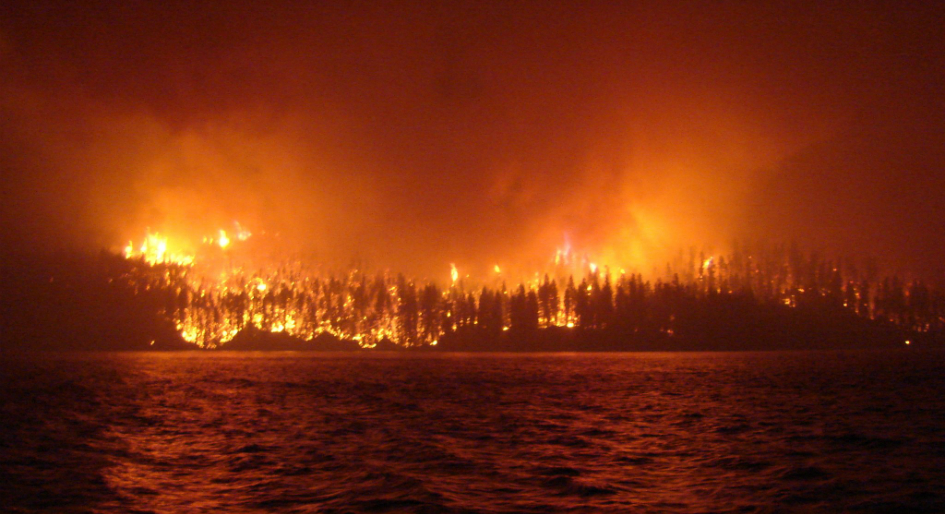The Canadian construction industry has long factored the snow and deep freeze of winter into project timelines. But contractors and builders are increasingly contending with wildfires, which can burn across Canada for seven months of the year (wildfire season can start as early as April, but typically peaks in July and August, and ends around October).
As the severity of wildfires continues to grow and encroach on populated areas, insurers are restricting when and where they’ll provide coverage; meaning prime construction months are increasingly being considered uninsurable in parts of the country at some point of the year.
In fact, insurers have been steadily expanding their wildfire threshold, for which the minimum buffer is currently 50 km — compared with between 10 km to 25 km just three years ago.
This means, insurers will not attach coverage to a project if there is a wildfire within a 50 km radius of the build.
In densely populated areas, the 50 km wildfire threshold can have a grave impact. To put this into perspective, the wildfires near Kelowna last summer likely hindered the insurability of new or just completed projects in municipalities such as: Big White, Summerland, Peachland, Penticton and Vernon.
As dryer conditions continue contributing to the escalating size, speed and severity of wildfires, a blaze that starts in a relatively remote area can quickly spread to within a 50 km radius of a town or city.
Also, it was generally assumed previously that a wildfire couldn’t jump a body of water the size of Okanagan Lake, which is five kilometers wide; however, it did just that — meaning it is possible that insurers could further expand their wildfire threshold beyond 50 km.
Impact on Construction Timelines
It’s important to note that the 50 km buffer not only affects the start of new builds but also completed projects; insurers are not transferring a construction policy to an operational policy if there is a wildfire within the defined threshold at the time of completion.
Relying on a course of construction policy to offer protection during this time of limbo is not an option as this coverage ceases once the structure can be ‘put to its intended use.’
All of this will force contractors and builders to navigate the scheduling implications of wildfire season; starting or completing a project in July or August — peak time for wildfires — may no longer be feasible from an insurance perspective. Not being able to secure necessary coverage has ripple effects, such as not meeting lender requirements and funding for a project not being advanced.
These circumstances are necessitating a greater emphasis on timeline management, which means not only shifting project starts and completions, but also factoring in delays and securing necessary trades services.
Growing Burden of Wildfires
To understand why insurers are moving in this direction, let’s examine the escalating threat of wildfires.
You may have heard 2023 was an unprecedented year for wildfires in Canada, with more than 6,500 blazes burning more than 18.5 million hectares across the country; by comparison, it took between 2015 and 2020 for a combined total of 17.4 million hectares to burn.
Furthermore, the number of disastrous wildfires in Canada has been steadily increasing since the 1950s. The Emergency Management Framework of Canada defines an event as disastrous if it meets one or more of the following criteria:
- 10 or more people killed.
- 100 or more people affected, injured, infected, evacuated or homeless.
- An appeal for assistance (national or international).
- Is considered historically significant.
- Causes significant damage or interruption to a community.
There were more than 30 disastrous wildfires in Canada in the 10-year period between 2010 and 2019 as well as between 2000 and 2009. Comparatively, there were less than 20 disastrous wildfires in Canada between 1990 and 1999, and less than 10 between 1950 and 1959.
In 2023 alone, at least 10 notable wildfires resulted in the mass evacuation of more than 72,000 individuals across Alberta, British Columbia, the Northwest Territories, Nova Scotia and Quebec. The insured damage, evacuation efforts and amount of land scorched in British Columbia, the Northwest Territories and Quebec, respectively, were also record breaking this past year.
Moving Forward
While most provinces and territories experienced wildfires last year, the west has proven year-after-year to be particularly vulnerable to severe wildfire activity.
So, while all builders and contractors should reexamine their project timelines in response to the escalating threat of wildfires, those working in areas prone to blazes — such as Alberta and British Columbia — must avoid starting or completing their projects during peak wildfire season due to the inability to secure necessary insurance coverage. Simply put, contractors and builders should be looking to avoid a project start or completion of works in July and August.
Planning for building phases that purposefully avoid project starts and completions during the summer months will be of utmost importance for the Canadian construction industry going forward.
David Green is the director of Acera Insurance’s construction division. He has over 20 years’ experience as an insurance broker, with a specialty focus on construction clients of all types and sizes. As one of the largest independent, employee-controlled brokerages in Canada, Acera Insurance provides the utmost certainty in its specialized insurance and risk management solutions. Learn more at acera.ca.









